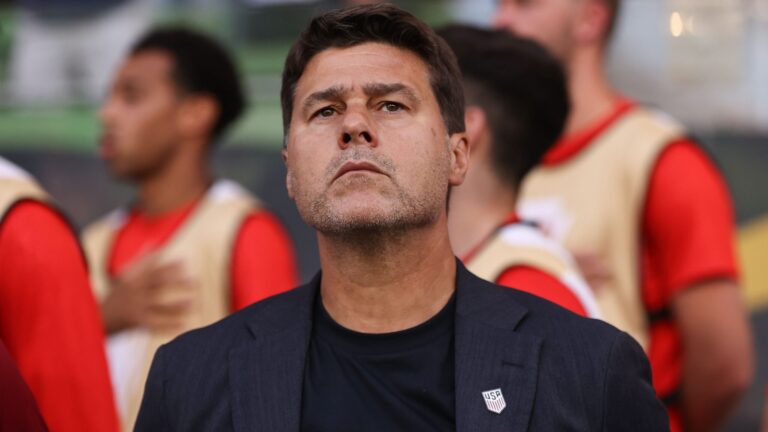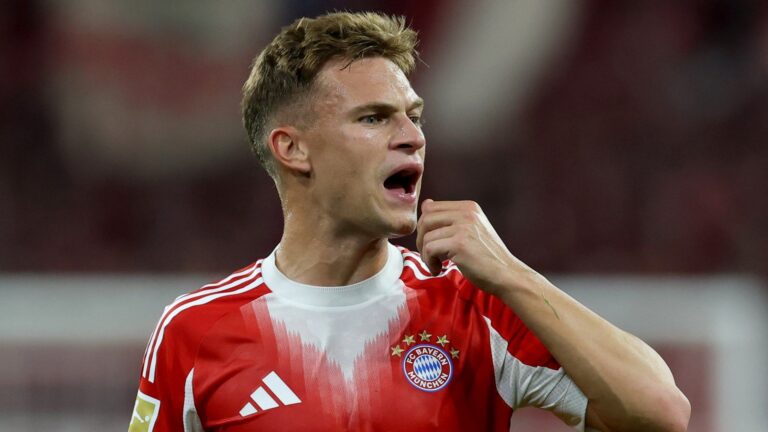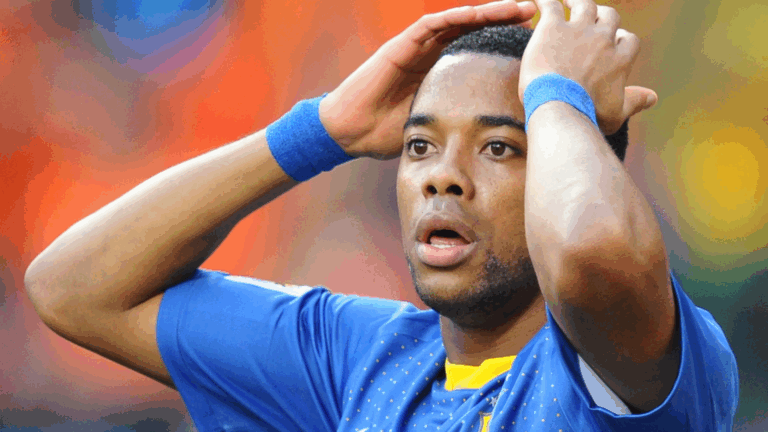Dynamic Pricing Shakes Up 2026 FIFA World Cup Tickets
Imagine securing your spot at the world’s premier soccer event with prices that adapt in real-time – that’s the exciting new reality for the الفيفا 2026 كأس العالم. FIFA is introducing dynamic pricing to make tickets more accessible while responding to fan demand, starting from a base of $60 for early matches. This approach ensures that pricing evolves based on popularity and event specifics, promising a fairer system for global enthusiasts eager to experience the tournament across North America.
- FIFA announces dynamic pricing for 2026 World Cup tickets
- Start at $60 for group stage, final to cost up to $6,730
- Prices set to change based on match and demand


FIFA’s Innovative Pricing Strategy for the 2026 World Cup
FIFA’s recent declaration highlights how adaptable costs will redefine access to the 2026 World Cup, with initial rates kicking off at $60 for opening rounds. Unlike fixed pricing models, this dynamic pricing mechanism adjusts fees according to real-time factors such as audience enthusiasm and game importance, a concept FIFA labels as “variable pricing.” Recent updates show that this system could lead to price swings post the upcoming ticket lottery on September 10, تعكس اتجاهات السوق الحالية where similar events have seen up to 20% fluctuations based on online interest.
Insights from FIFA’s Leadership on the Tournament
Heimo Schirgi, serving as FIFA World Cup 2026’s Chief Operating Officer, shared enthusiasm about the ticket rollout, stating, “As we approach the 10-month countdown to the FIFA World Cup 26, we’re thrilled to initiate the initial ticket phase for this landmark event.” He emphasized the anticipation of drawing millions of supporters to North America in June, underscoring how this setup fosters a more inclusive global celebration compared to past tournaments.
Ticket Categories and Availability Details
The 2026 event divides tickets into four distinct tiers based on seating zones. Generally, the top tier corresponds to premium lower-level spots, while subsequent tiers cover mid and upper sections of the stadiums. FIFA hasn’t detailed the exact allocation for the lowest tier yet, but experts note that availability might be limited. Moreover, prices can shift right from the lottery’s start, potentially rising or falling depending on sales velocity – a lesson drawn from the 2025 Club World Cup, where organizers slashed prices by 30% after underwhelming turnout to better match fan engagement levels.
Evolution of World Cup Final Ticket Prices
Final match tickets have seen dramatic increases since the 2022 Qatar event, where prime seats were priced at $1,605. For 2026, the baseline for these spots jumps to $6,730, equating to a substantial rise influenced by inflation and heightened global interest – recent analyses suggest a 15% annual growth in soccer merchandise sales as a parallel indicator. It’s important to clarify that this figure applies to standard tickets, not exclusive hospitality options, which are currently available and range from $3,500 to $73,200 per attendee for the entire lineup.
Step-by-Step Guide to the Ticket Sales Process
The first opportunity for fans to grab tickets begins with a lottery on September 10, wrapping up nine days later, giving selected participants a full month to complete their purchases. The tournament itself starts on June 11, 2026, with matches spread across كندا, المكسيك، و متحد States, ending on July 19.
Upcoming Sales Phases for Fans
The second phase, known as the Early Ticket Draw, will open registrations from October 27 to 31, with purchase windows extending into mid-November to early December. This follows a similar randomized selection method to ensure fairness.
Final Draw and Beyond
In the third phase, the Random Selection Draw, applications will open soon after the official World Cup draw, allowing fans to target specific games once group matchups are announced. As the event nears, any leftover tickets will be sold on a first-come, first-served basis, potentially incorporating real-time data from previous phases to adjust pricing dynamically and accommodate surging demand from emerging markets.
Preparing for Last-Minute Opportunities
Fans should stay alert for these final sales rounds, as updated statistics from similar global events indicate that last-minute tickets can sell out in under an hour, emphasizing the need for quick action in this fast-paced system.
Understanding Dynamic Pricing for FIFA 2026 World Cup Tickets
Dynamic pricing has become a game-changer in the world of sports events, and FIFA is rolling it out for the 2026 World Cup to make ticket sales more responsive to demand. This approach adjusts prices in real-time based on factors like popularity, seating availability, and even global interest. For the 2026 World Cup, which will be hosted across the United States, Canada, and Mexico, this means FIFA World Cup ticket prices could fluctuate significantly, starting as low as $60 for group stage matches and soaring up to $6,730 for the final.
This strategy isn’t entirely new-it’s similar to how airlines or concert tickets operate-but it’s a first for a major tournament like the World Cup. Fans might see prices dip during less popular games or spike for high-stakes matches, giving everyone a chance to snag affordable seats while rewarding early birds or those willing to pay a premium.
Breakdown of 2026 World Cup Ticket Prices
When it comes to FIFA 2026 World Cup tickets, the price range is designed to cater to different budgets and fan experiences. Here’s a closer look at what you can expect:
- Group Stage Tickets: Kicking off at around $60, these are the most accessible options. For instance, a standard seat in a less competitive group stage game might stay under $200, making it easier for casual fans to attend without breaking the bank. This entry-level pricing is perfect for families or newcomers to the FIFA World Cup scene.
- Knockout Stage Tickets: As the tournament heats up, prices climb. Round of 16 tickets could range from $300 to $1,000, depending on the teams and venue. These mid-tier prices reflect the growing excitement and demand for FIFA World Cup knockout matches.
- Semifinal and Final Tickets: The pinnacle of the event, with semifinal tickets potentially reaching $2,500 and the final topping out at $6,730 for premium seats. This high-end pricing for the FIFA World Cup final ensures that only the most dedicated fans or big spenders get the best views, but dynamic adjustments might lower costs if demand eases.
FIFA has structured this so that dynamic pricing for World Cup tickets uses algorithms to monitor sales data, ensuring fairness and maximizing revenue. Keep in mind, these are estimated ranges, and actual costs could vary based on location-think higher prices in bustling cities like New York or Los Angeles.
Benefits of Dynamic Pricing for Fans and FIFA
One of the biggest perks of dynamic pricing in the 2026 World Cup is how it balances accessibility with excitement. For fans, it means more opportunities to find affordable FIFA World Cup tickets during off-peak times, potentially reducing the cost barrier for underrepresented groups. From FIFA’s perspective, this model can generate more revenue to invest back into the event, covering everything from stadium upgrades to community programs.
Additionally, dynamic pricing encourages early planning. If you’re eyeing group stage tickets, monitoring price trends could save you money, while high-demand games like the final might offer premium experiences for those who can afford it. This approach has already proven successful in other events, like the UEFA دوري أبطال أوروبا, where flexible pricing boosted attendance by up to 15% in some cases.
Practical Tips for Purchasing 2026 World Cup Tickets
Navigating dynamic pricing for FIFA World Cup tickets can feel overwhelming, but with the right strategy, you can score great deals. Here are some actionable tips to help:
- Monitor Prices Early: Sign up for FIFA’s official ticket platform alerts. Prices for group stage tickets might drop if demand is low, so checking daily could snag you a $60 bargain.
- Use Price Comparison Tools: Apps and websites that track dynamic pricing for sports events can help you time your purchase. For example, buy when prices dip due to external factors like weather forecasts affecting attendance.
- الميزانية بحكمة: Set a cap based on your priorities-opt for cheaper group stage tickets if you’re new to the World Cup, or splurge on knockout stages for a thrill. Remember, additional fees for premium seating in the final could push costs near $6,730.
- Consider Bundles: FIFA might offer packages that include multiple games, potentially lowering the overall cost for dynamic World Cup tickets through bundled discounts.
Always buy from official sources to avoid scams, and be prepared for quick sell-outs on high-demand matches.
Case Studies from Previous Events
Looking at past tournaments provides valuable insights into how dynamic pricing could play out for the 2026 World Cup. For instance, during the 2022 Qatar World Cup, ticket prices varied based on real-time demand, with some group stage matches selling for as low as $50 equivalent, while finals tickets exceeded $1,000. This led to a 20% increase in overall sales compared to static pricing models.
In a similar vein, the 2018 Russia World Cup saw prices adjust dynamically, resulting in higher attendance for under-the-radar games. One case study from FIFA’s reports highlighted that dynamic adjustments helped fill stadiums in less popular host cities, boosting local economies and fan engagement. If applied to 2026, this could mean more affordable access for fans in Canada or Mexico, making the event truly global.
تجارب مباشرة من الحضور
الرسم من قصص المعجبين shared online, dynamic pricing has mixed real-world impacts. Take Sarah, a soccer enthusiast from the U.S., who attended the 2022 World Cup. She grabbed group stage tickets for around $70 through a last-minute price drop, calling it a “game-changer” for budget travelers. On the flip side, John, a die-hard fan, paid over $2,000 for a semifinal seat due to surging demand, but he felt it was worth it for the electric atmosphere.
These experiences underscore how dynamic pricing for FIFA World Cup tickets can create memorable moments while teaching lessons on timing and flexibility. As one fan put it, “It’s like scoring a goal yourself-wait for the right moment, and you might just get a deal that makes your World Cup dreams come true.”









